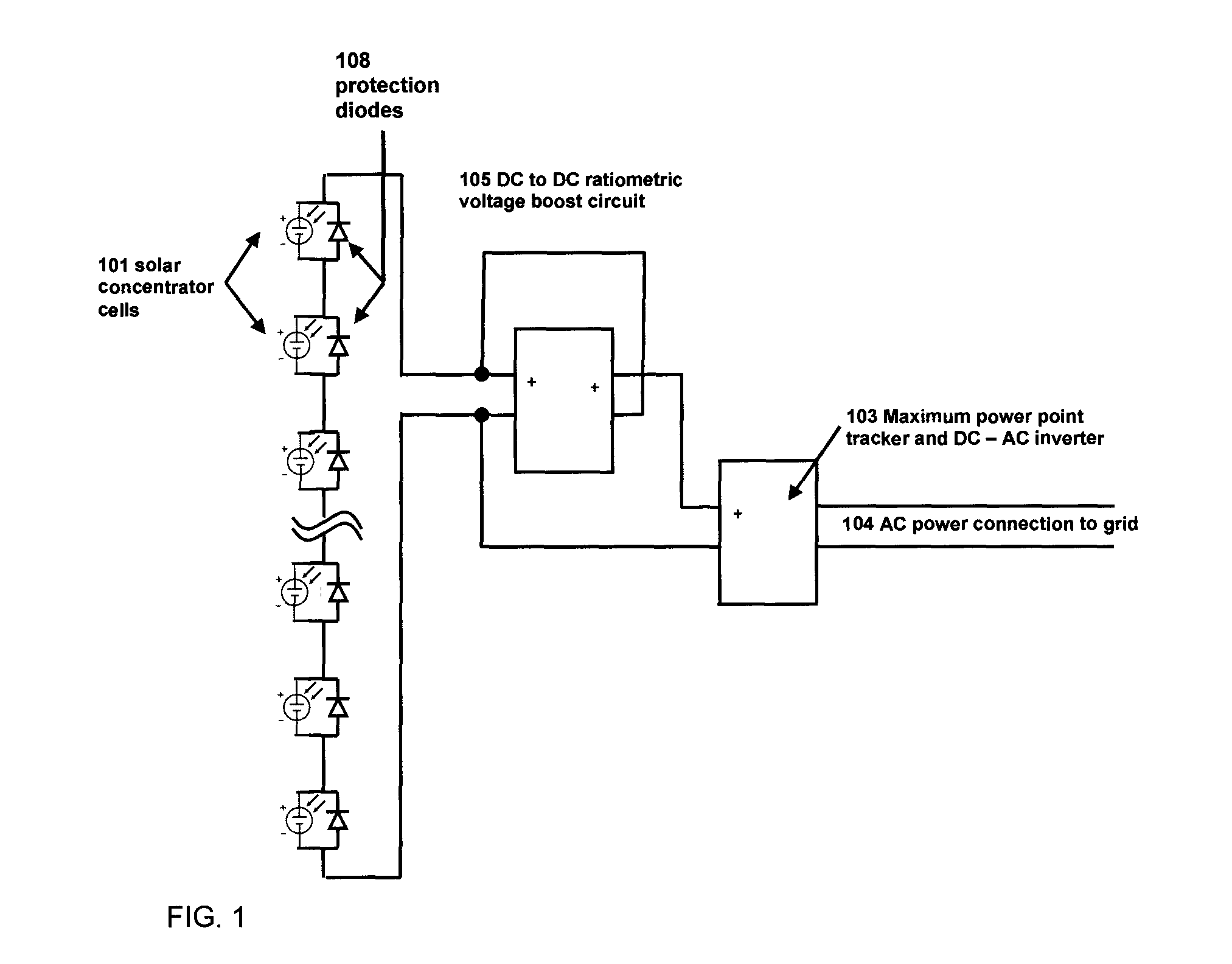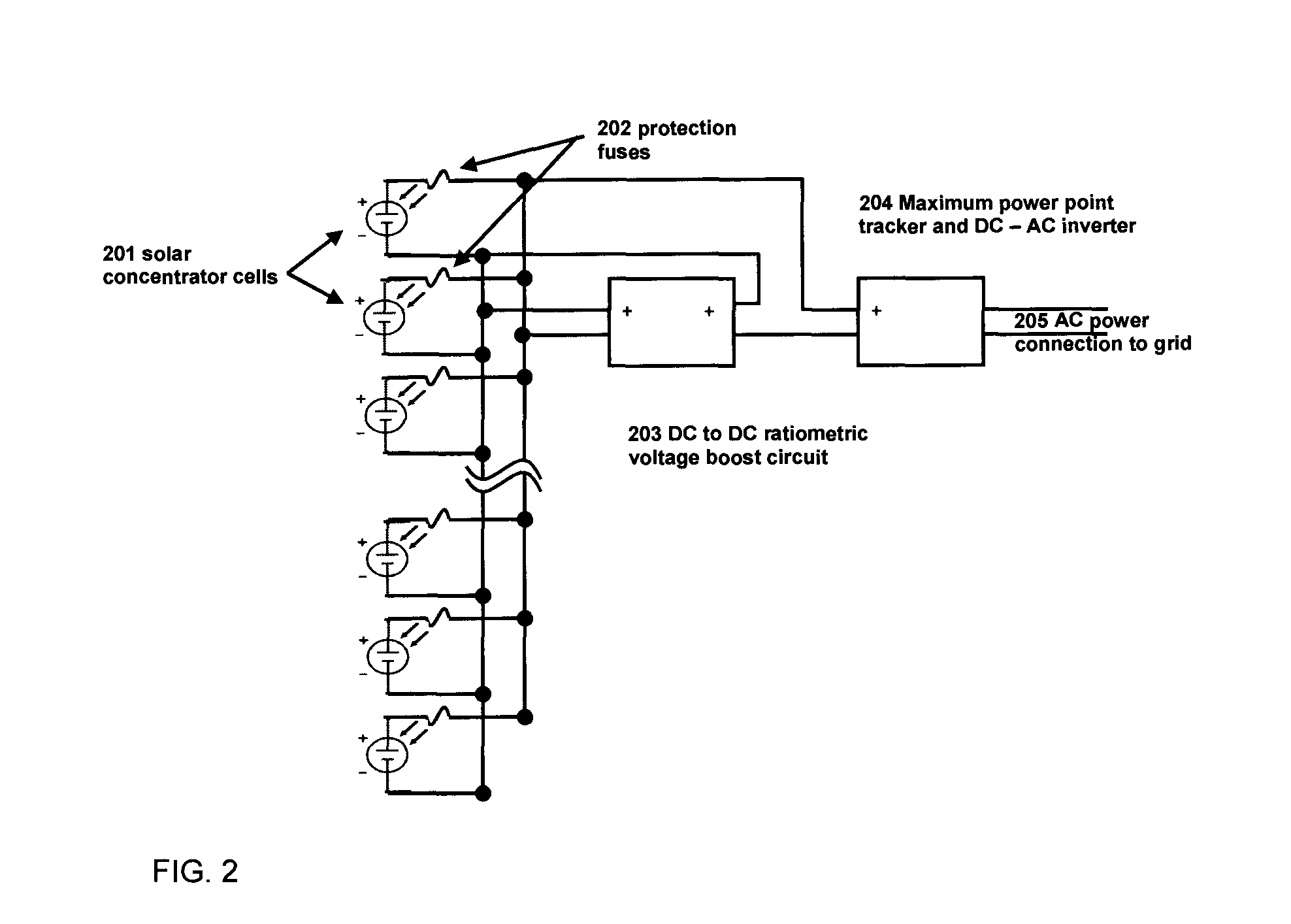Techniques for Grid Coupling Photovoltaic Cells Using Ratiometric Voltage Conversion
a technology of ratiometric voltage conversion and photovoltaic cells, applied in the direction of dc network circuit arrangement, dc source parallel operation, semiconductor devices, etc., can solve the problems of series connected cells, limited performance, and thus limited power point to less than optimal performance, and increase the severity of limitation
- Summary
- Abstract
- Description
- Claims
- Application Information
AI Technical Summary
Benefits of technology
Problems solved by technology
Method used
Image
Examples
Embodiment Construction
[0016]Provided herein are techniques for connection of photovoltaic power producing elements, such as photovoltaic cells, to power conditioning and grid tie circuitry. With concentrator photovoltaic cells in particular, these systems are characterized by significantly higher cell currents and increasingly larger distances between cells. In some applications individual cell currents can reach 30 amps per square centimeter of cell area. At these current levels, connectors become expensive and very thick wires are required to connect cells. Thus, maximizing performance from a grid connected array of photovoltaic power producing elements is important, especially in the case of concentrator photovoltaic systems.
[0017]The circuits described herein utilize a ratiometric DC to DC converter. In general, a DC to DC converter is a type of power converter circuit that can convert a source of direct current (DC) from one voltage level to another. In particular, a ratiometric DC to DC converter i...
PUM
 Login to View More
Login to View More Abstract
Description
Claims
Application Information
 Login to View More
Login to View More - R&D
- Intellectual Property
- Life Sciences
- Materials
- Tech Scout
- Unparalleled Data Quality
- Higher Quality Content
- 60% Fewer Hallucinations
Browse by: Latest US Patents, China's latest patents, Technical Efficacy Thesaurus, Application Domain, Technology Topic, Popular Technical Reports.
© 2025 PatSnap. All rights reserved.Legal|Privacy policy|Modern Slavery Act Transparency Statement|Sitemap|About US| Contact US: help@patsnap.com



